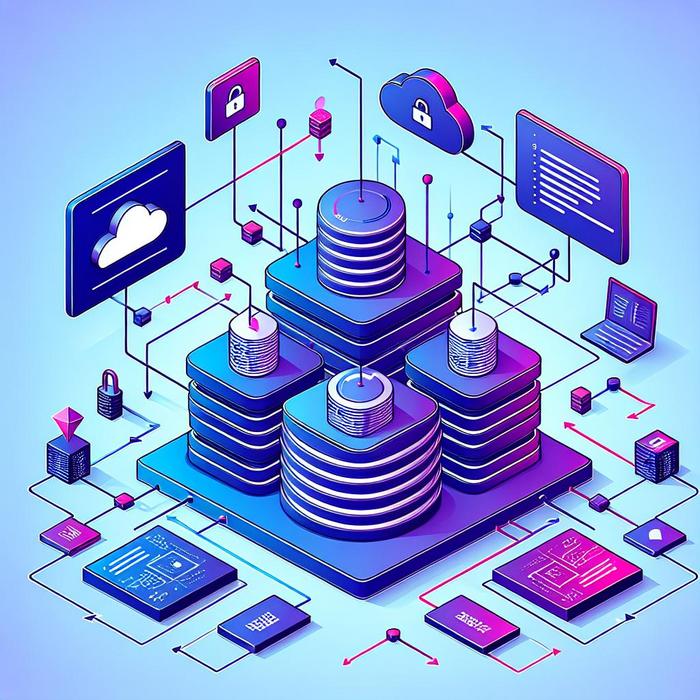Table of Contents Hide
Observability vs Monitoring: Decoding the Differences
 7 MIN. READING
7 MIN. READING
What is the Distinction between Observability and Monitoring in Advanced Data Solutions?
Have you ever found yourself pondering about the distinction between observability and monitoring? Well, you’re not alone. Many high-level executives within large corporations like CIOs, CTOs, data architects, database administrators, and IT leaders are faced with the same question, especially when tasked with making strategic decisions about data infrastructure.
Observability: The New Kid on the Block
Observability is a concept that has been gaining traction in recent years. While it may carry similarities with monitoring, their applications diverge quite drastically. Observability goes a step further by providing insights into the internal states of systems by examining their external outputs. It focuses on understanding the “why” behind system behavior, enabling you to identify and solve problems more efficiently than traditional monitoring methods.
Observability is particularly valuable in database virtualization, where a virtual data layer provides unified access to data across disparate sources. It provides you with the ability to understand the state of your system, diagnose issues, and ensure optimal performance. A deep dive into the topic can be gleaned from discussions at this Reddit thread.
Monitoring: The Tried-and-True Method
On the other hand, monitoring involves the process of systematic checking on a system or process over time. It is primarily focused on checking the system’s health, ensuring it operates within expected parameters and recognizing any deviations. Monitoring is akin to taking the pulse of your system regularly. Is all as it should be? If not, what is amiss?
In the context of database virtualization, monitoring can help keep tabs on data provisioning, data anonymization, and ensuring compliance with data regulations. While monitoring is a valuable tool, it often lacks the depth of understanding of the “why” behind system behavior. An in-depth explanation on monitoring in the context of cybersecurity can be found on this CrowdStrike page.
Deciphering the Differences
So, what sets these two apart? Observability and monitoring are two sides of the same coin, yet they offer different perspectives and functionalities. While monitoring can alert you to a problem, observability strives to help you understand why the issue occurred in the first place.
Observability aids in proactive problem-solving, providing a detailed picture of system states and behaviors, thereby enabling rapid diagnostic and troubleshooting processes. It is particularly beneficial in complex systems, where understanding system behavior can be akin to finding a needle in a haystack.
Incorporating Both Strategies
The truth is, neither observability nor monitoring is inherently better than the other. They serve different purposes and, when used together, can provide a comprehensive overview of your system’s health and performance. The key is to understand and leverage their unique strengths.
For example, database virtualization can benefit greatly from both observability and monitoring. Utilizing monitoring tools ensures that your system is functioning well while the deeper insights from observability allows for swift and accurate troubleshooting when issues arise.
In essence, achieving an ultimate level of understanding and control over your data operations involves knowing when to deploy monitoring and when to delve deeper using observability. Additional insights into how software tools can help automate compliance in database operations, and how to select the best security testing tools for your business can be found here and here.
How to Choose Between Observability and Monitoring?
Choosing between observability and monitoring shouldn’t be a binary decision, rather a balance between the two depending on the specific needs of your organization. It’s crucial to assess the complexity of your database virtualization system and the nature of the problems you’re trying to solve. Are you simply trying to ensure everything runs smoothly, or do you need to delve deeper into understanding the “why” behind certain behaviors?
Considerations for Choosing the Right Balance
Understanding system behavior, underlying database issues, and ensuring the smooth operation of your data operations are some reasons to consider observability. In the realm of database virtualization, it provides a detailed understanding of system states and a competent platform for efficient problem-solving. But, it’s also crucial to ensure that everything in your system is functioning as it should, which is where monitoring comes in handy.
Monitoring offers an effective surveillance mechanism for your data operations. It keeps an eye on various data-related aspects, such as data provisioning and data anonymization, given the importance of maintaining privacy in today’s data-driven businesses.
Both concepts are fundamental in creating an effective data operation. They are not to be used as an ‘either-or’ mechanism but rather, these methods should be used in conjunction to create an accurate and complete picture of the entire data ecosystem.
Considerations While Balancing Observability and Monitoring
Balancing observability and monitoring depends upon several factors. If you’re tackling complex systems, you might lean more towards observability. If you need to comply with privacy laws and ensure operational health, continuous monitoring would be the go-to strategy. Here are a few considerations:
– System complexity: The more complex your system is, the more there is a need for observability. Complex systems often present in hidden ways, making them hard to diagnose and solve.
– Regulatory requirements: Complying with data privacy regulations is paramount for any business. Monitoring lends itself to this purpose by keeping track of data provisioning and data anonymization. Enjoy an in-depth read on mastering data privacy regulations here.
– Business size: Larger businesses and enterprises might need a higher degree of integrated observability and monitoring, given the larger data volumes and intricate systems.
The Path Towards Intelligent Decisions
There’s no single correct answer in the observability vs. monitoring debate. Both play critical roles in managing modern data operations, particularly within database virtualization.
Strategically leveraging the strengths of each helps enterprises to meet their objectives. You don’t want to merely observe issues happening and not be alerted. Similarly, you don’t want to receive system alerts without enough intelligence to diagnose and fix them.
The Essence of Observability and Monitoring
Ultimately, whether you choose to lean more on observability or monitoring depends on your unique business needs, the complexity of your system, and your specific objectives.
Just remember, the aim is to provide the best possible data operations for your business. That involves monitoring system health, ensuring compliance, and diving deep with observability to understand the “why” behind system behavior and performance.
Observability empowers you on the diagnostic journey, allowing for a deeper understanding of system behavior and pinpointing where issues are originating. Monitoring, with its focus on the health of system operations, offers the peace of mind that everything’s functioning correctly, and alerts you when it’s not. To discover more about optimizing test data, check here.
In the end, it’s not a choice between one or the other. Rather, it’s about striking the right balance and leveraging the unique capabilities of each to ensure optimal performance in your data operations.
To gain a deeper understandingof the difference between monitoring and observability, study this detailed comparison here. For a truly insightful outlook on how monitoring and observability are shaping the world of data in 2023, have a look here.
With a clear understanding and strategic implementation of observability and monitoring, you can leverage the power of advanced data management techniques, creating a data operations environment that is robust, resilient, and ready for the challenges of the future – no matter what they might be.


